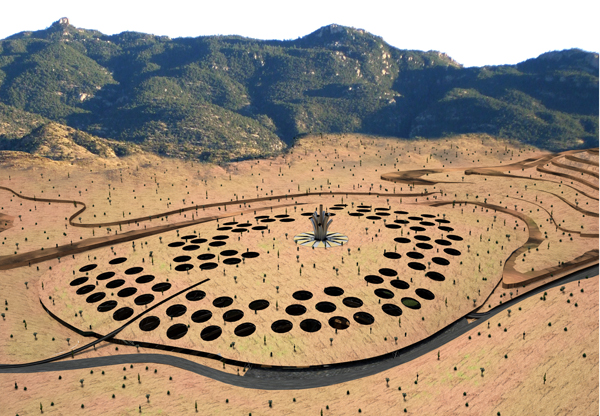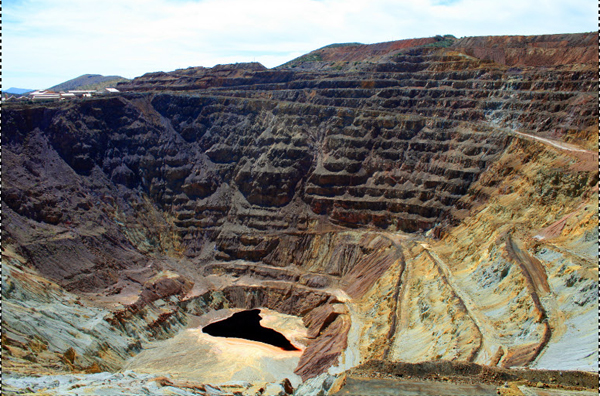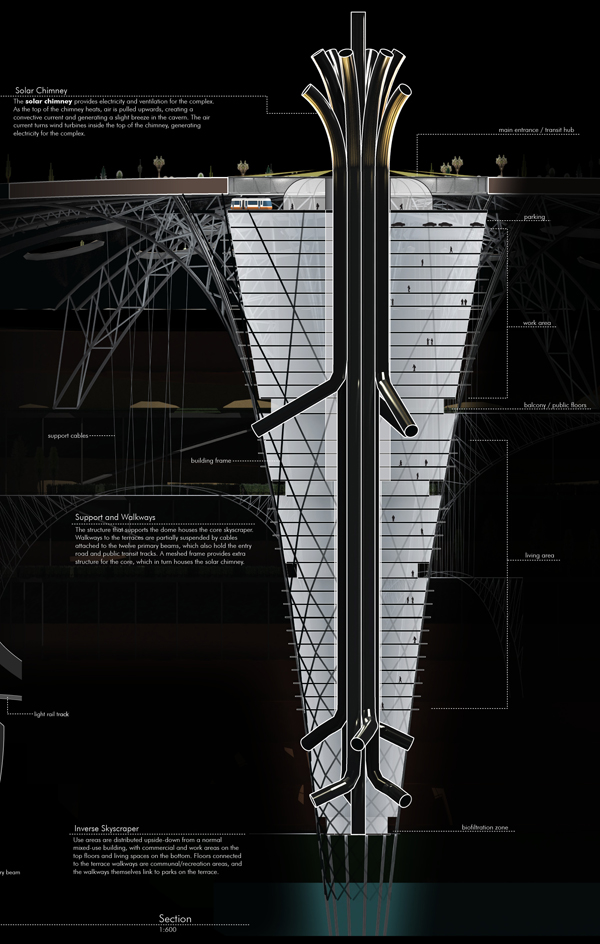Can a building still be called a skyscraper if it, in fact, never has contact with the sky above sea level?
Matthew Fromboluti of Washington University in St. Louis thinks so, and has designed a skyscraper that seeks not only to hold a veritable society worth of people and uses, but simultaneously heals the scarred landscape of the desert outside of Bisbee, Arizona. His project, titled “Above Below,” proposes the infill of a 900-foot deep and nearly 300-acre wide crater left by the former Lavender Pit Mine with a structure that will hold living and working areas, and green space for farming and recreation.
The building is completely self-sustaining, with its own power source, water recycling system, and mechanisms such as a solar chimney to control the artificial climate. Enclosed with a dome roof, the building is completely contained underground, with only strategically-placed skylights for climate control providing access to the world above ground. However, the society living inside is far from isolated – a light-rail system connects the building with nearby Bisbee.
In a concept completely foreign to the flashy modern skyscraper ethos, the desert’s landscape will grow and evolve over the top of the building’s dome, making it virtually invisible to those viewing the site above ground. By housing a productive and sustainable society, Above Below seeks to right the decimated landscape with an asset more precious than the metals once plundered from the site.




















